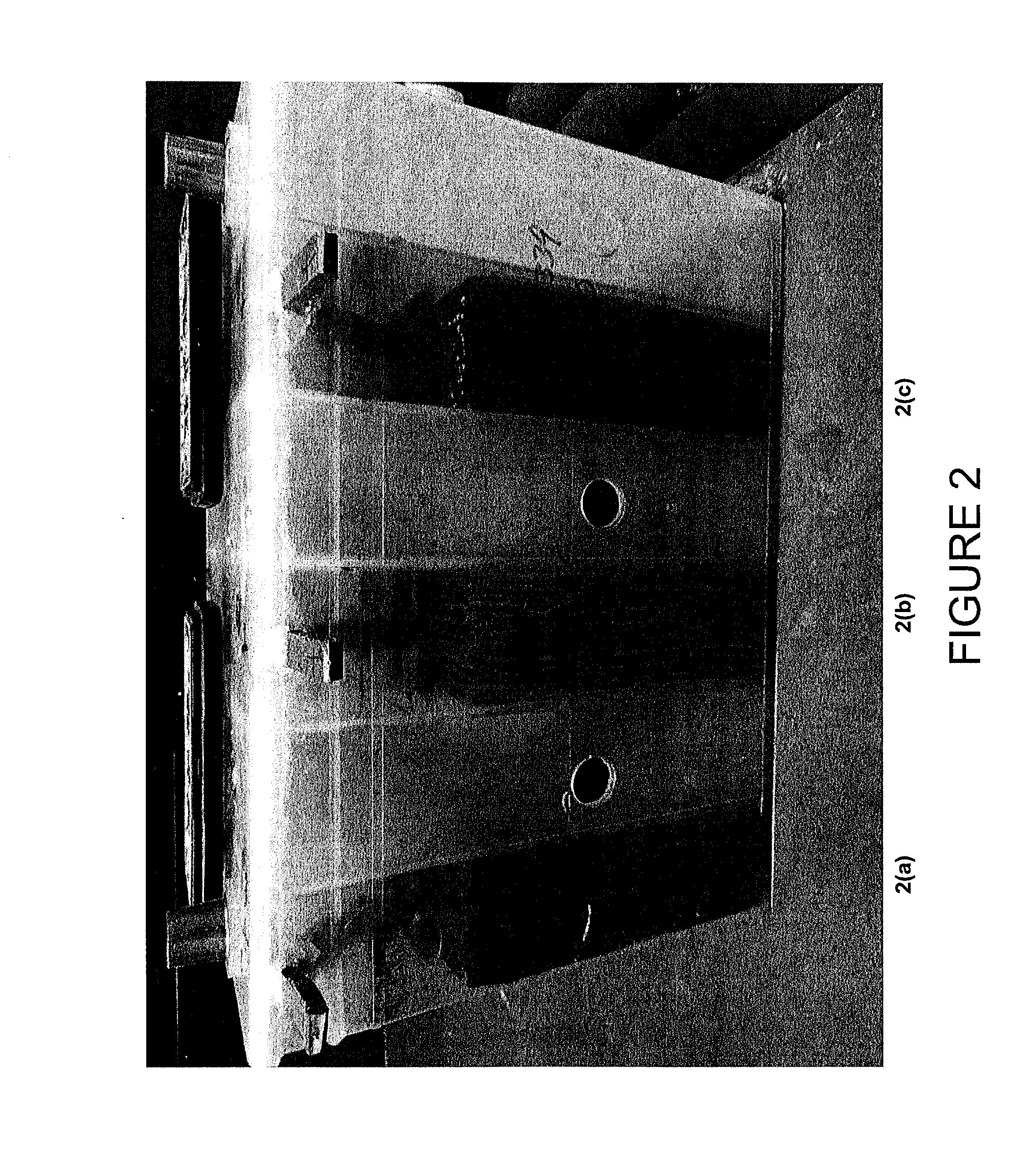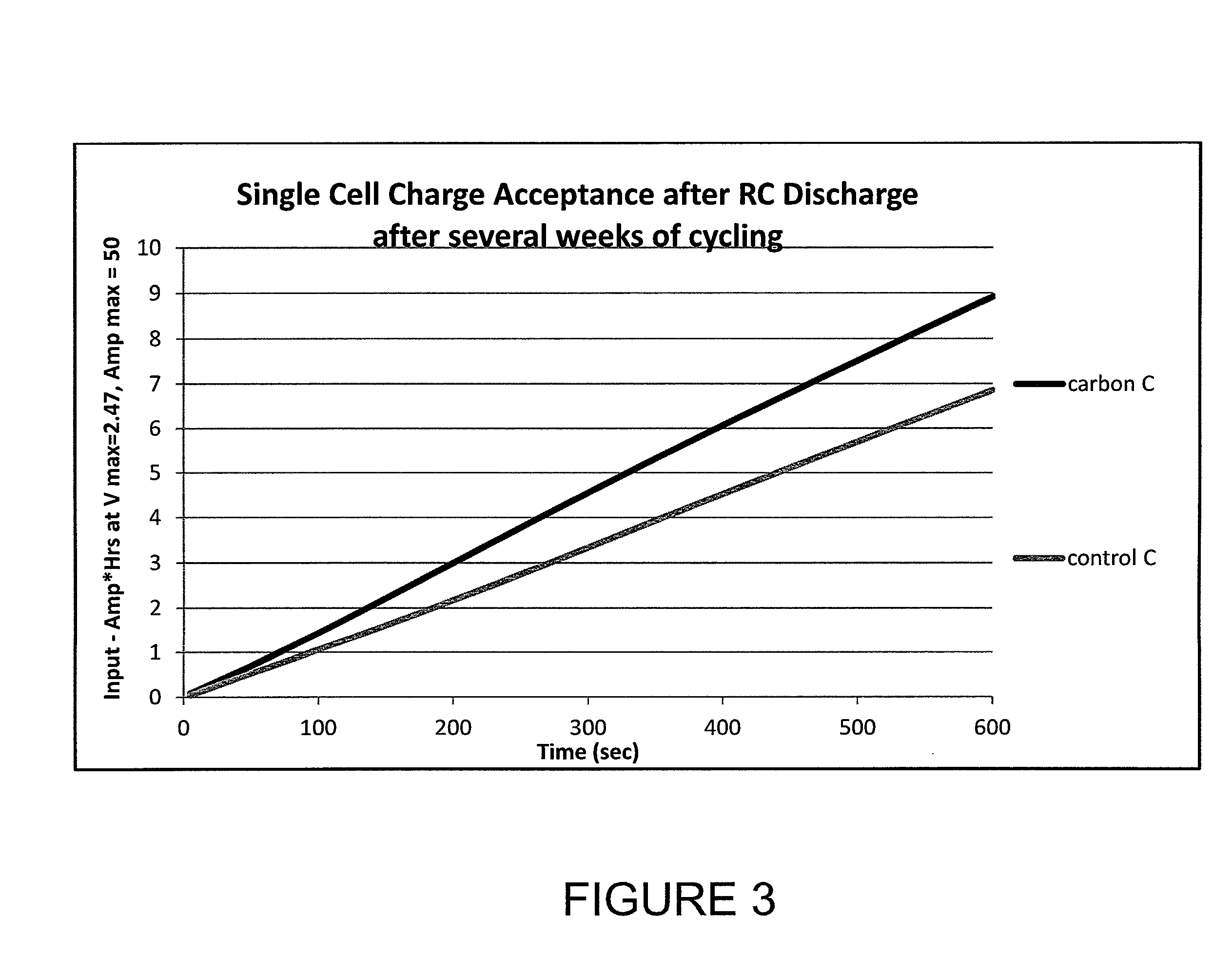Lead-acid battery separators, electrodes, batteries, and methods of manufacture and use thereof
a lead-acid battery and separator technology, applied in the direction of cell components, final product manufacturing, sustainable manufacturing/processing, etc., can solve the problems of premature shortened battery cycle life and reduced charge/discharge cycle efficiency, so as to improve the charge rate, reserve capacity, and cycle life.
- Summary
- Abstract
- Description
- Claims
- Application Information
AI Technical Summary
Benefits of technology
Problems solved by technology
Method used
Image
Examples
example 1
Application of Carbon to Polyethylene Lead-Acid Battery Separator
[0068]A coating solution, slurry, or paste was prepared and subsequently applied to the negative face of the separator as detailed below. FIG. 1(b) shows a battery separator for use in a lead-acid battery, for example, a polyethylene separator. In this particular embodiment shown in FIG. 1(b), the separator has a cross-ribbed shape (meaning it has major ribs as well as cross-ribs) and has a cut edge at the left which is open for insertion of a battery plate, a folded edge at the right, as well as top and bottom edges that have been closed by crimping or sealing or the like. The ribs may provide distance or separation for the battery separator. However, separators of many shapes may be used in embodiments herein. In FIG. 1(b), the polyethylene separator is not coated.
[0069]FIG. 1(a) shows a similar polyethylene separator for use in a lead-acid battery that has been coated with a coating of carbon black in accordance wit...
PUM
| Property | Measurement | Unit |
|---|---|---|
| thickness | aaaaa | aaaaa |
| lead-acid | aaaaa | aaaaa |
| energy storage performance | aaaaa | aaaaa |
Abstract
Description
Claims
Application Information
 Login to View More
Login to View More - R&D
- Intellectual Property
- Life Sciences
- Materials
- Tech Scout
- Unparalleled Data Quality
- Higher Quality Content
- 60% Fewer Hallucinations
Browse by: Latest US Patents, China's latest patents, Technical Efficacy Thesaurus, Application Domain, Technology Topic, Popular Technical Reports.
© 2025 PatSnap. All rights reserved.Legal|Privacy policy|Modern Slavery Act Transparency Statement|Sitemap|About US| Contact US: help@patsnap.com



